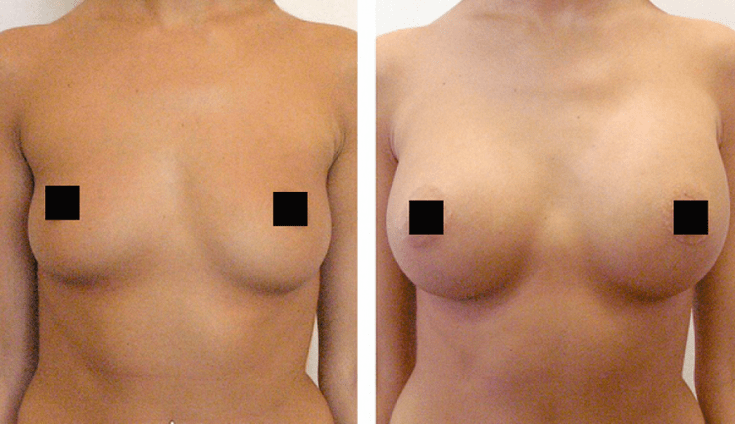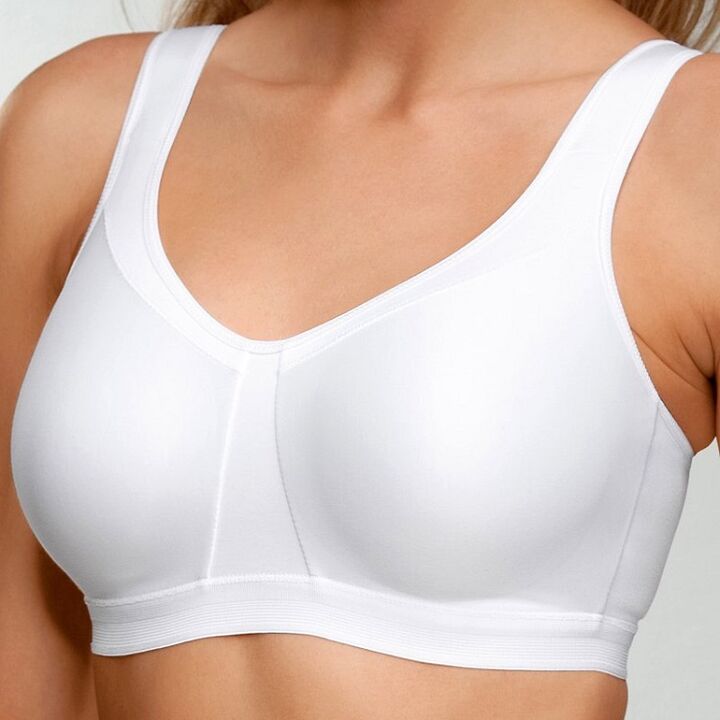Breast augmentation with hyaluronic acid is the safest method today. Before the method appeared, mammoplasty was used.
The surgery was performed on the chest in which the implants were placed. The chest grew in size, but it seemed unnatural.
However, no one could give a full guarantee that the surgery would take place without complications. The advent of this method of breast augmentation puts women at less risk.

How to increase breasts with hyaluronic acid?
Many have heard of hyaluronic acid. Someone knows it as a major component of synovial fluid, which provides lubrication to the articular cartilage of connective tissues, and someone has heard of it from the world of cosmetics.
In particular, it has become known for maintaining skin firmness and elasticity. How does this happen?
Hyaluronic acid has the unique ability to attract and retain water as a sponge, providing volume and hydration to tissues.
Due to this property, this polysaccharide has been successfully used in plastic surgery for breast augmentation.
This technique allows you to achieve the desired breast size without surgery.
Breast augmentation is performed by gel injection, namely hyaluronic acid-based skin filling.
Because the molecules of this polysaccharide are large and retain large amounts of water, its consistency is similar to that of a thick gel. One size of breast augmentation requires about 300 ml of gel.
How is the procedure done? The procedure is painful, so it is performed under local anesthesia. Prior to the operation, all necessary tests shall be performed and the date of the operation shall be determined.
Non-surgical breast augmentation takes about 40 minutes. The medicine is injected into the chest using a cannula.
This is a special tube that resembles a pen and replaces the needle. Holes remain at the injection site to which cosmetic sutures are applied.
The breast gets exactly the shape the patient wants. It is very important that the procedure is performed by an experienced professional because not all doctors are able to insert the gel into the breast correctly.
After completing the procedure, on days 2 and 3, unpleasant pain and a burning sensation appear in the area of the mammary glands. Reddening of the breast skin, formation of hematomas and itching are also possible. All of these symptoms will soon go away.
Recovery period
Within 1 month, the patient should not be exposed to physical activity on the upper body. Both overheating and cold are contraindicated.
You should not put pressure on the mammary gland, namely massage it or sleep on it as the gel may shift and the breast may deform.
It is recommended to wear a compression dress to support the bust. The healing period depends on the age of the patient, the quality of the epidermis, the amount of gel injected and the lifestyle.

Duration of effect
Fillers are divided into absorbable and non-absorbable materials. For breast augmentation, the first type of injections are mainly used because they are based on hyaluronic acid, which dissolves quickly.
The effect is temporary - from 6 months to a year. Non-absorbable injections are dangerous with the development of various complications and are therefore practically not used.
Botox breast augmentation is often confused with dermal fillers. The difference is that Botox preparations are harmful to the body as they contain botulism toxin.
A gel containing hyaluronic acid is a filler that increases tissue volume.
What breast fillers are used?
There are many types of hyaluronic acid fillers available for breast augmentation.
Because they differ in their properties, they should be selected by a specialist based on the characteristics of the patient's skin and mammary glands.
One more point to consider: a gel with hyaluron has an antidote. It is a special enzyme called hyaluronidase. Able to destroy a failed result.
Contraindications and complications
Are there any contraindications to hyaluronic acid breast augmentation? There are many cases where it is impossible to use a gel for breast augmentation.
Contraindications include all benign and malignant breast tumors.
Such operations are not performed even when a woman is planning a pregnancy, as unabsorbed residues of the gel can compress the milk ducts during lactation. In autoimmune diseases, intervention in the mammary gland is contraindicated.
When an ultrasound or x-ray of the mammary glands is performed, the cysts are no different from the accumulation of fillers and are often cloudy.
This makes it difficult to examine the body for possible neoplasms. Tactile also makes diagnosis difficult.
If the breast becomes inflamed, surgery and antibiotics will be needed for treatment.
For the sake of perfection, many women risk their health without paying attention to the contraindications.
The effect after the introduction of hyaluronic acid is undeniable and the result is tangible: the breast will be supple and fat and the skin will be much younger.
But this result is temporary, so you need to repeat the procedure. Such interventions can have negative consequences.
Advantages and disadvantages of the procedure
This method is not suitable for women who have organ prolapse (ptosis). This procedure only exacerbates the problem.
Hyaluronic acid dissolves over time, but procedures involving contact with the mammary glands should not be used beforehand.
The fact that this procedure does little damage to the mammary gland is a great advantage, but after administration of the drug, the soft tissues, blood vessels, and ducts are compressed in the mammary glands due to swelling of hyaluronic acid.
The drug, which occupies a certain place in the chest, acts on nearby tissues.
Why is hyaluronic acid breast augmentation banned in France? This method does not pose special risks and hazards to health.
In this country, however, as a precautionary measure, it was decided to introduce a ban because the diagnosis of malignancies after the introduction of hyaluronic acid is very complicated.


























